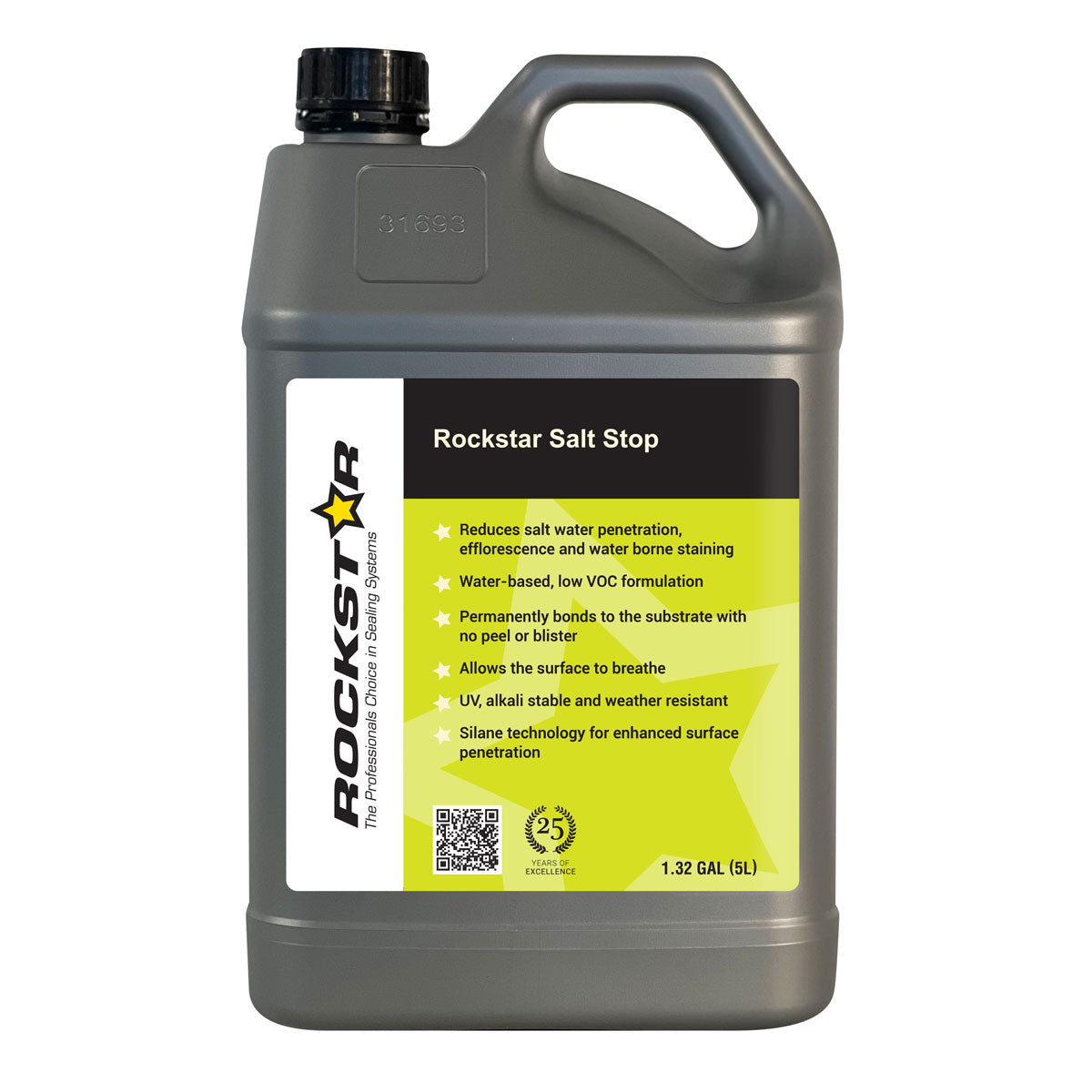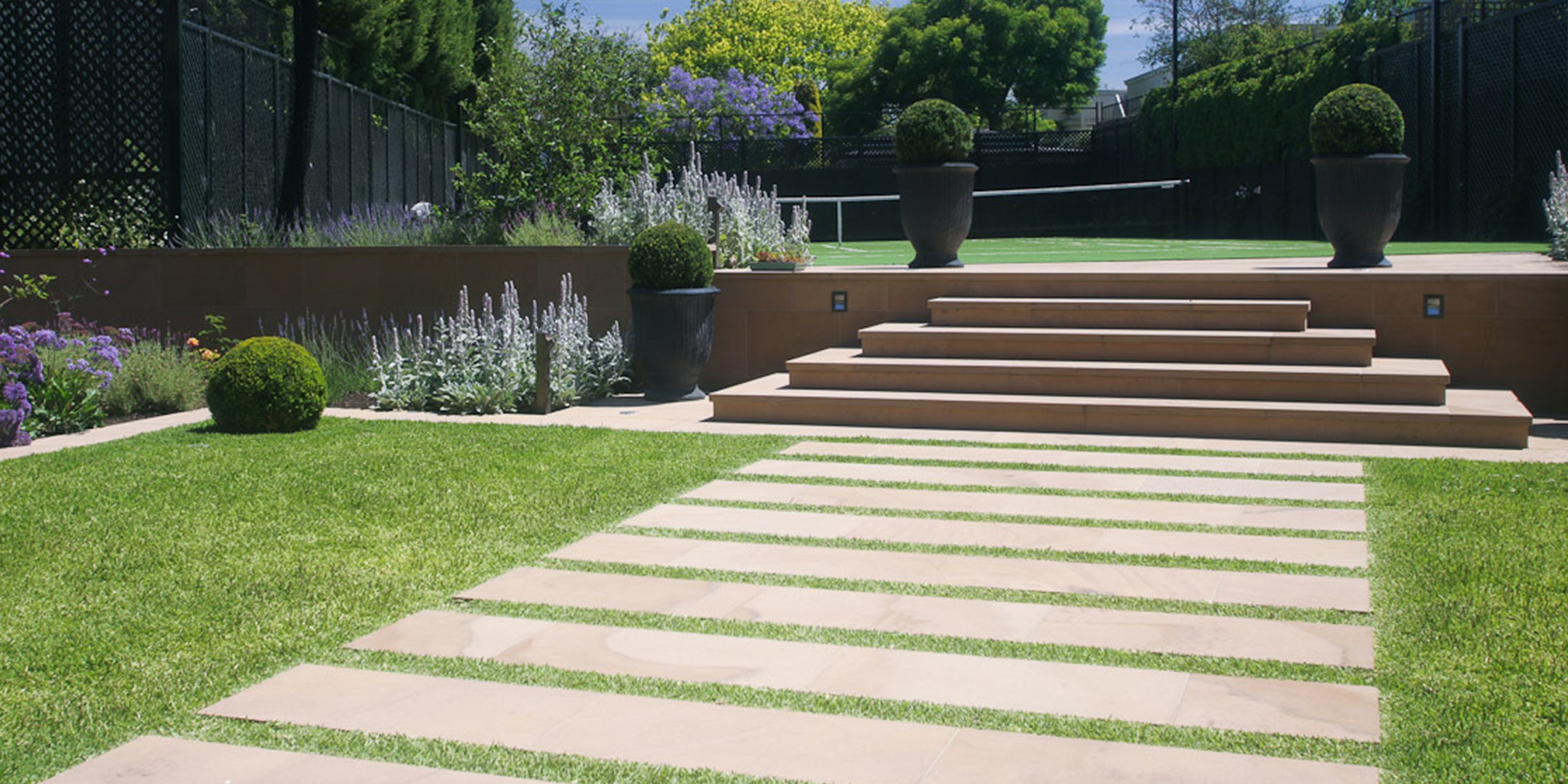DESCRIPTION
SALT STOP is a high performance sealer that protects against the damaging effects of salt water and de-icing salts.
• Reduces salt water penetration, efflorescence and water borne staining
• Water-based, low VOC formulation
• Permanently bonds to the substrate with no peel or blister
• Allows the surface to breathe.
• UV, alkali stable and weather resistant
• Silane technology for enhanced surface penetration
RECOMMENDED USES
On any porous mineral substrate requiring protection from water and salt ingress.
• Around salt water pools
• Walls
• Floors
• Infrastructure exposed to di-icing salts
SURFACES THAT CAN BE PROTECTED
Salt Stop is ideally suited for porous surfaces around saltwater pools including
• Natural porous stone
• Concrete pavers
• Brick paving
• Terracotta
• Grout
• Porous tiles
Salt Stop protects against de-icing damage in
• Pavers
• Flagstones
• Poured concrete
Important! – Not recommended for use on previously salt exposed surfaces.
DIRECTIONS FOR USE
- Read the instructions carefully to ensure correct application and safe handling.
- Do not apply if rain or extreme weather is imminent.
- The surface to be protected should be clean, dry, and free of oil, grime, and any previous coatings. If the surface needs to be cleaned, use water and detergent, and ensure that excess detergent is fully flushed away. Allow the surface to fully dry before application.
- Do not apply onto salt contaminated surfaces! Repair all cracks and other defects with suitable repair materials.
- Mask off any surfaces that will not be treated.
- Due to the variability of building materials, always apply onto a test area to ascertain the number of coats required, consumption rate and final appearance of the surface.
- Shake the container before use.
- Salt Stop can be applied by brush, roller or spray. The preferred method however, is by low pressure saturation spray application using a hand held pump sprayer or airless spray equipment.
- For horizontal surfaces apply enough material such that the surface remains glossy wet for about 10 minutes. If the sealer is absorbed very quickly, apply a second coat immediately. After 10 minutes remove any standing liquid to leave a matte wet surface. Allowing standing pools of product to dry on a surface will result in an uneven appearance!
- Application onto vertical surfaces should start at the top of the surface using a flooding action that results in the liquid running down the surface 30-50cm. Apply a second coat while the surface is still wet.
- Wash all equipment in clean water.
CONSUMPTION RATE
The consumption rate depends on the porosity of the substrate. Consumption could be up to 120sqft/Liter for a single application.
CURING
Surface water repellency will initially appear when the surface is dry. Full cure takes 24 – 72 hours. Avoid traffic in the first 24 hours.
PHYSICAL PROPERTIES
Appearance – Milky white liquid
Specific gravity – 1.0g/ml at 20˚C
pH value – 7-8
Solubility in water – Soluble
VOC content – <15 g/L
STORAGE AND HANDLING
Store unused product in tightly closed containers in a cool dry place away from fire or ignition sources. Do not allow to freeze! Follow good industrial hygiene practices and protect skin and eyes from contact with product. Wash hands after use.
PACKAGING: Salt Stop is available in 1, 5 and 20 Liter sizes.
TECHNICAL DATA SHEETS
Please access the product information sheet and Material Safety Data Sheet (MSDS) below:
Salt Stop Technical Data Sheet
Salt Stop Safety Data Sheet
DISCLAIMER
The advice and information contained herein is based on our best knowledge of the product. We believe the information to be accurate and reliable as at the date supplied, but no representation, guarantee or warranty, expressed or implied, is made to the accuracy, reliability, or completeness of the advice and information. We urge persons receiving this advice and information to make their own determination as to the advice and information’s suitability and completeness for their own particular situation. When in doubt it is always prudent to perform a trial on a scrap section of material, or inconspicuous section of the job to ascertain the products suitability.


